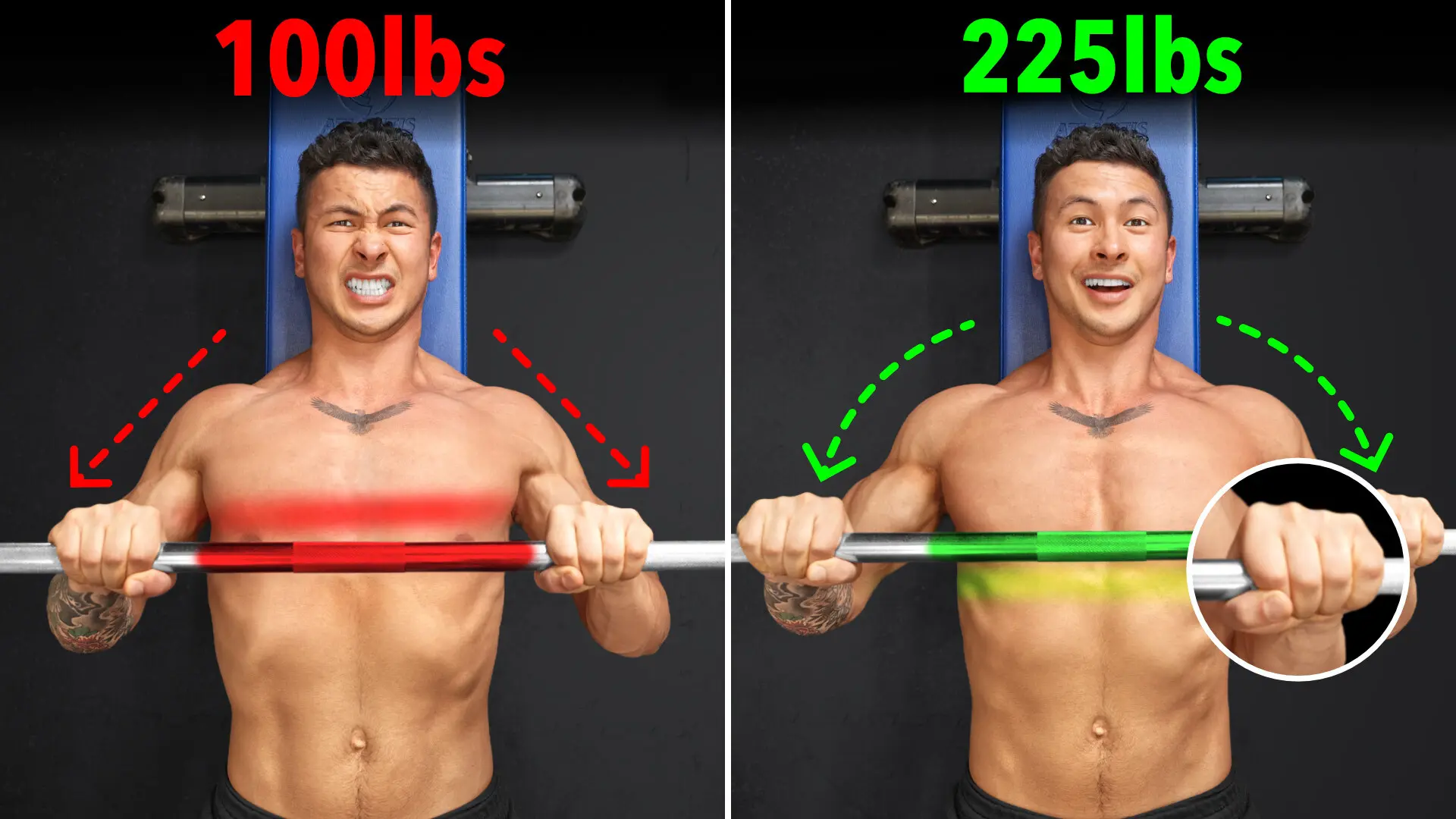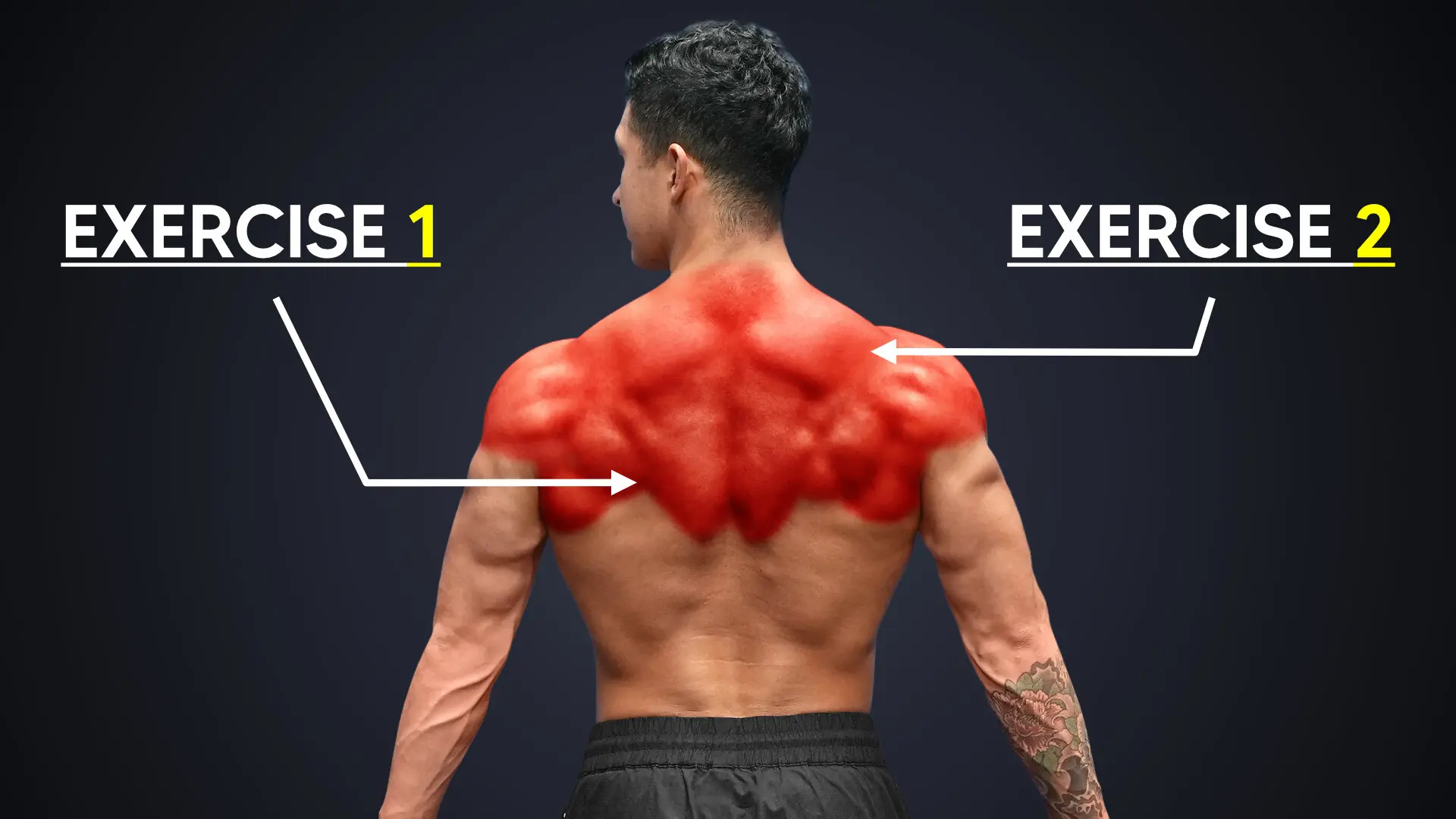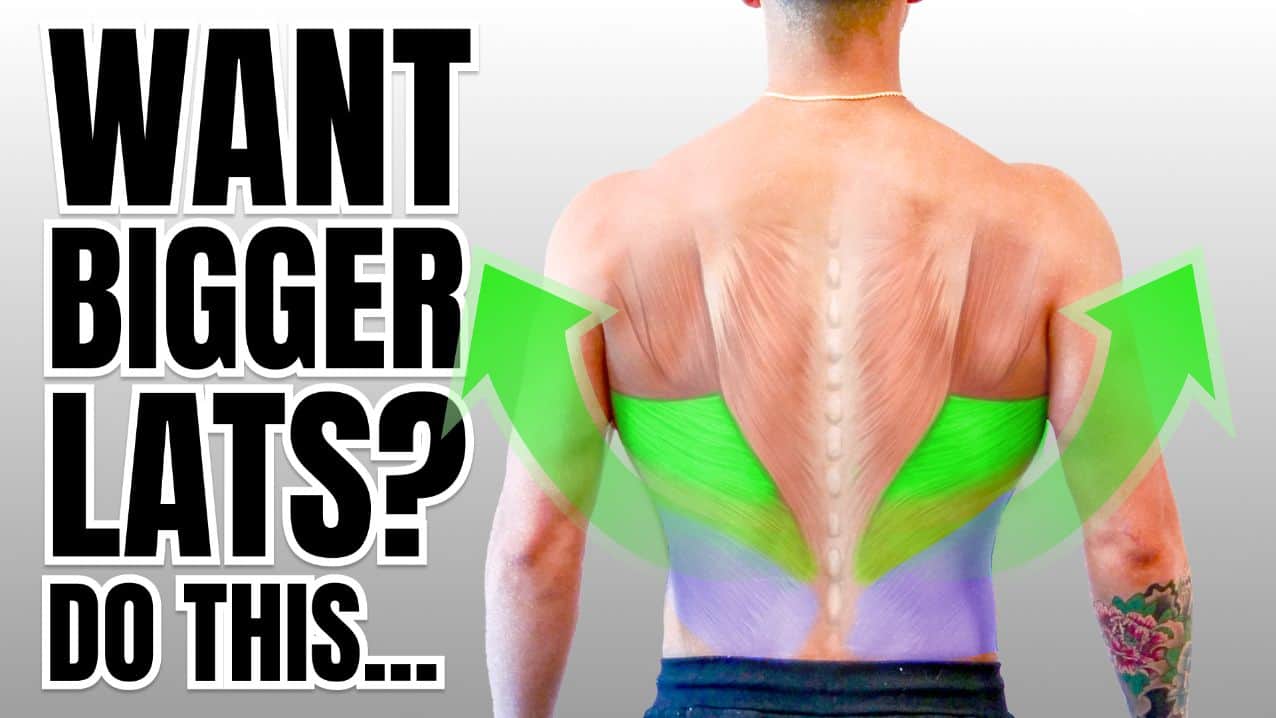
2 'Must-Do' Lats Exercises For A Wider Back (Based On Science)
Unhappy with your back width? You may be using the wrong exercises to train your lats. In this article, I cover the 2 lats exercises you need to know - and how to perform them.
One of the most difficult muscles to grow is the lats. This is unfortunate since they're key to creating a wider looking back. But why are the lats so difficult to grow in the first place? Well, there are 2 main reasons. The first is that you cannot see them. This makes activating them quite difficult. And the second, arguably bigger, reason? It's that most of us just use the wrong 'lats exercises' to target them in the first place.
Take any of the lat pulldown exercises, for instance. Given their names, you'd think that they're excellent exercises for the lat muscle. In reality, though? They actually don't hit the lats very well - and are more of an upper back and traps movement, simply based on the way the lat fibers run. The same is true with pull-ups and many rowing movements (e.g. your barbell rows). Sure, the lats and overall back are involved in these exercises. But they aren't the best choice to include in your workout if you'd like to really prioritize your lats development - and get a wide back. Which, to be honest, is precisely what most people need.
Sure the lats and overall back are involved in these exercises, but they aren’t the best choice if you’d like to really prioritize your lats development, which to be honest most people need. So, in this article, I'll show you two best lats exercises that'll enable you to do just that. After trying them out, many of you will likely finally:
- Experience what a lat contraction actually feels like AND
- Start seeing noticeable results in your back width
But of course, if you’re not just looking to develop your lats, then you’d benefit from one of our programs. These go through, step-by-step, how you can develop a well-rounded physique (not just a wider back!) If you’re interested:
Click the button below to take my analysis quiz to discover the best program for you:
↓
Understanding Your Lats Anatomy Helps You Pick The Right Exercises
First, let’s do a little brief on the lats anatomy. The lats are a big fan-like muscle that wraps around your back. It can actually be divided into 3 different regions: the thoracic, lumbar, and iliac lats. These can just be thought of as the upper, mid, and lower lats. The lat fibers get more horizontal at the top and more vertical at the bottom.
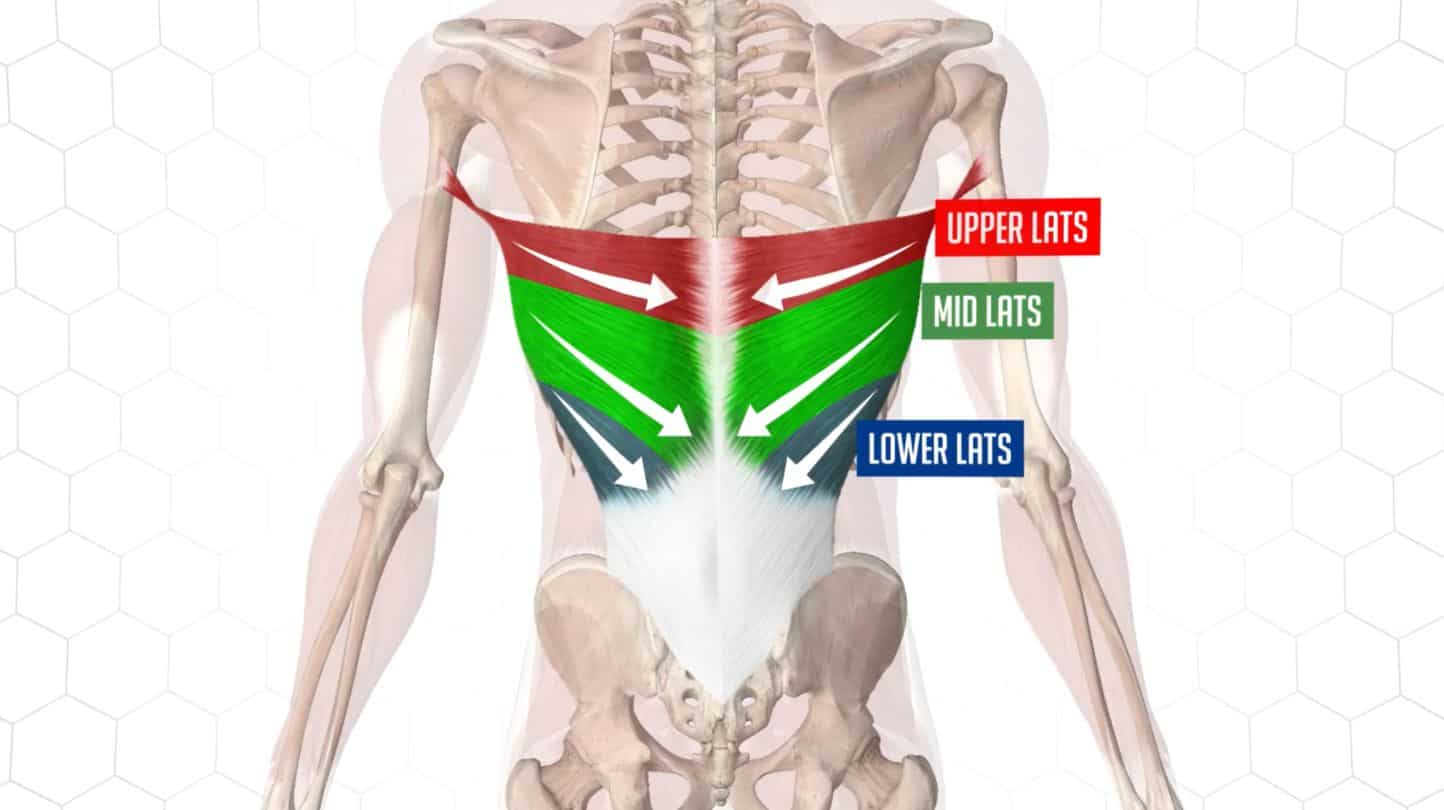
Note that during any “lats” exercise in general, all three regions of the lats will be involved. But, as you'll see in this article, you can slightly favor certain regions over the other by better matching the exercise with the direction in which the fibers run. Thus, knowing your lats basic anatomy and fiber direction will help you better execute the following two exercises - which will, in turn, give you a wider back.
Exercise 1: Lat-Focused Row
To emphasize the upper and mid lats a little more, we’ll use a lat focused row. This is a move I first came across from Coach Kassem, creator of N1 training.
Now, most of you are probably already doing some form of a cable row in your routine - which is great for the overall back. But if you wish to make it more lats-focused, you'll have to be mindful of (and implement) a few key setup tweaks.
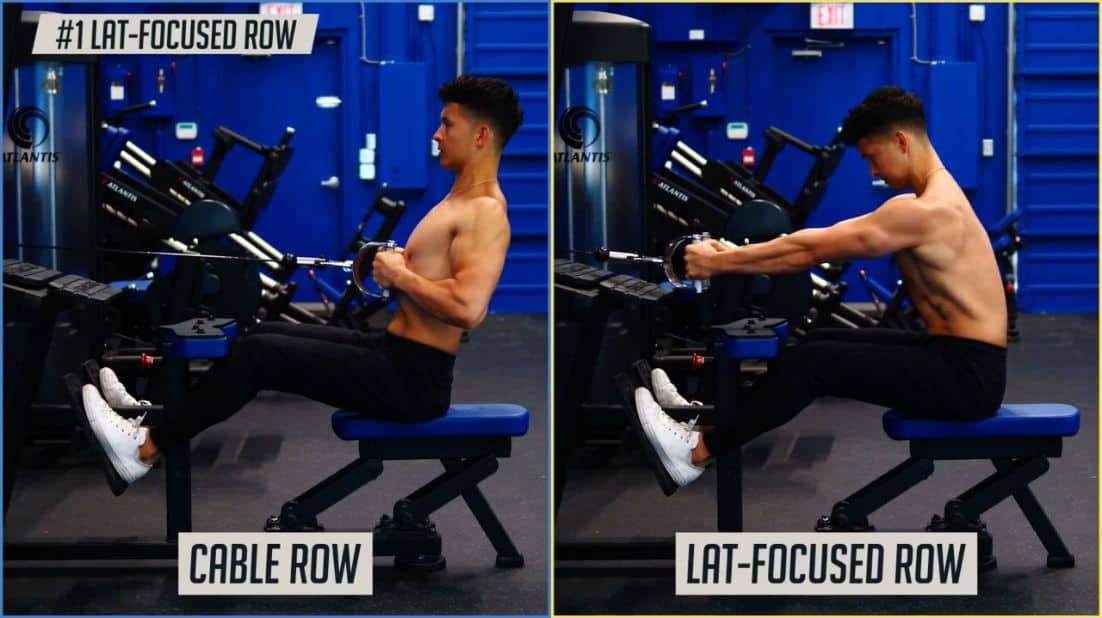
Pay Attention To Your Elbow Positioning
First, tuck your elbows to your sides. Keep them there as you row rather than flaring them out. The further away your elbows are from your torso, the more your rear delts and upper back will be involved. And that will mean less lats activation as a result.
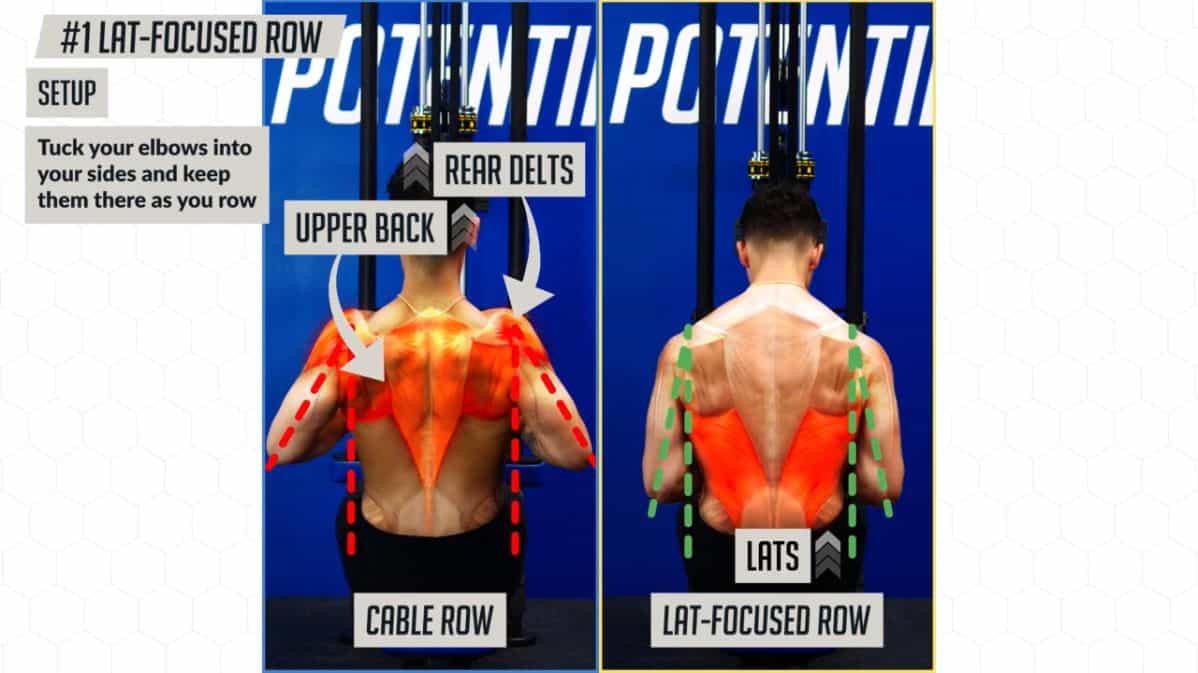
Next, stop the row once your elbows reach your torso. You don't want to extend the motion beyond this. That's because the lats are going to be less involved in the movement when we pull the elbows further back behind our torso. That added range of motion will come from the rear delts and upper back muscles instead of lats. And also tends to be past the range of motion of what most people’s shoulders are capable of in the first place.
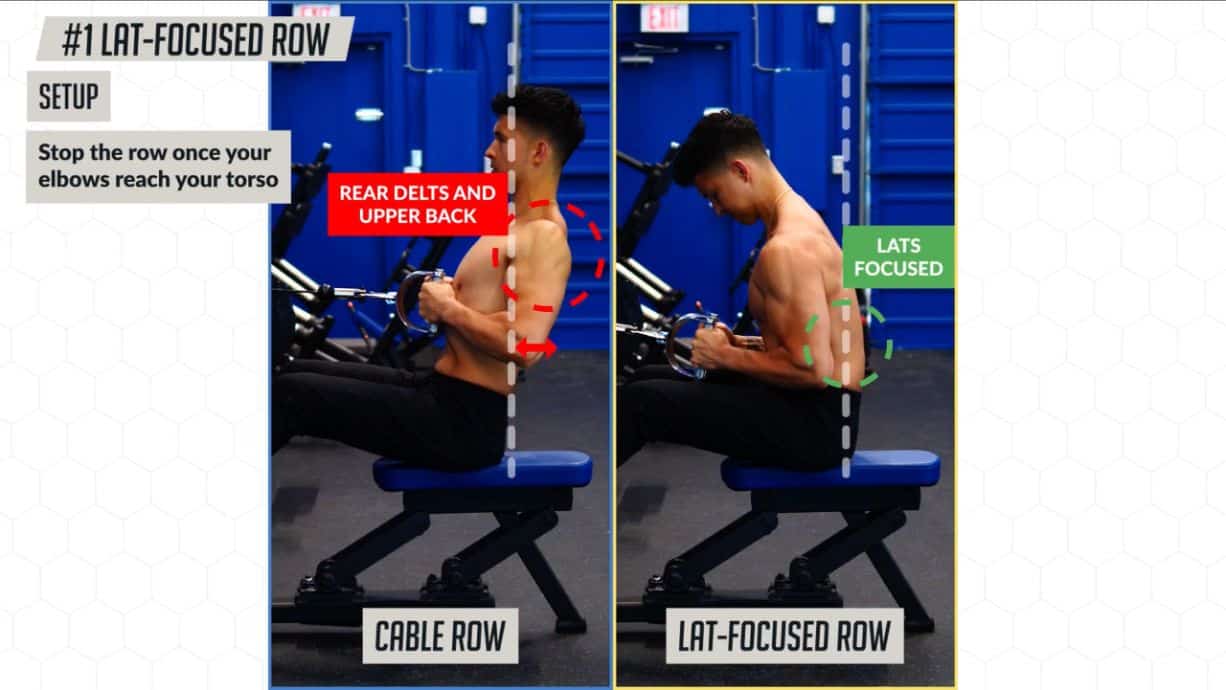
You also want to be mindful of your forearms at the end position. Ideally, they should line up with the direction of the cable. So, avoid overly flexing or extending the elbow as you pull. Doing so will start involving more of your arms instead of your lats.
Limit The Amount Of Arching In Your Upper Back
Lastly, as you pull, you want to limit how much you extend and arch your upper back. Over-arching your back will, again, put the upper back in a more favorable position compared to the lats. Instead, incorporate a slight hinge forward at your hips. This helps you better line up the lats with the line of pull and to increase their range of motion.
As you do this, you’ll want to keep your abs engaged. Ensure there’s no rounding of your lower back. Depending on your hip mobility, you may only be able to achieve a slight torso lean forward. This is fine.
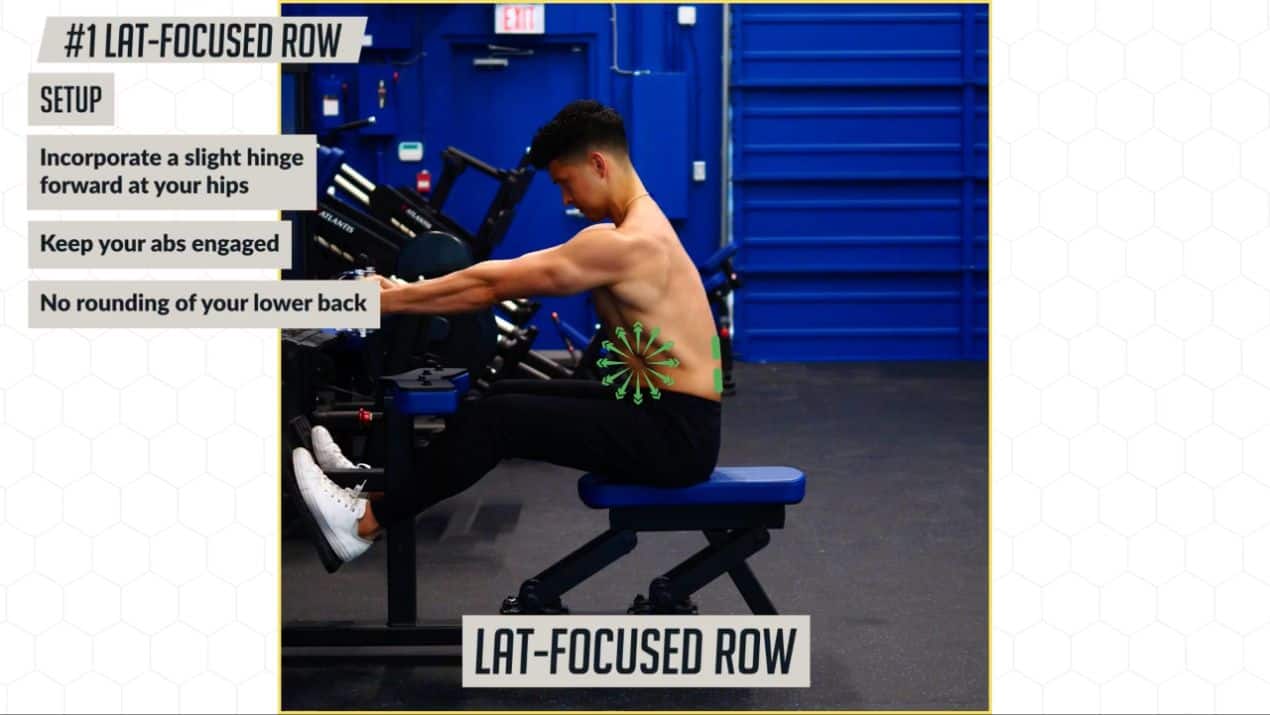
You may also find that placing your feet on the floor instead is more comfortable. This is also fine. It may look weird, yes, but does wonders in terms of activating your lats.
Sometimes, the smallest of modifications to your form and exercise execution can make or break your muscle activation. But knowing what these tweaks are can honestly be pretty challenging. This is where our 3-on-1 coaching program comes in. You’ll have a dedicated coach assigned to you (plus myself and a dietitian) to guide you every step of the way, so you always know how to achieve optimal muscle growth. To find out more:
Click the button below to find out more about the 3-on-1 coaching program:
↓
Additional Tips That'll Help Make The Exercise More Lats-Focused
Now that you've gotten the setup down... The next key is execution and your thought process as you row. First, instead of thinking about pulling back and retracting your shoulder blades, initiate the movement by thinking about pulling your elbow down by using your lats. Then, as you pull, continue thinking about bringing your elbow down and in.
Let's go back to the anatomy of the lats. Look at their line of pull: you can see how the fibers move down and in. So, visualize a rope attaching to your upper arm and pulling down, back, and in towards your spine. That’s essentially what your lat is doing. And is helpful to visualize as you pull.
Lastly, as for handles, ideally, you’d want to use a neutral grip wider handle. This is best for biasing the lats. But the truth is that applying this form and execution will make a big difference - regardless of what handle you have access to. Don’t have access to a cable row currently? Then you can apply most of these tips and cues to something like a dumbbell row in order to make it more lat focused.
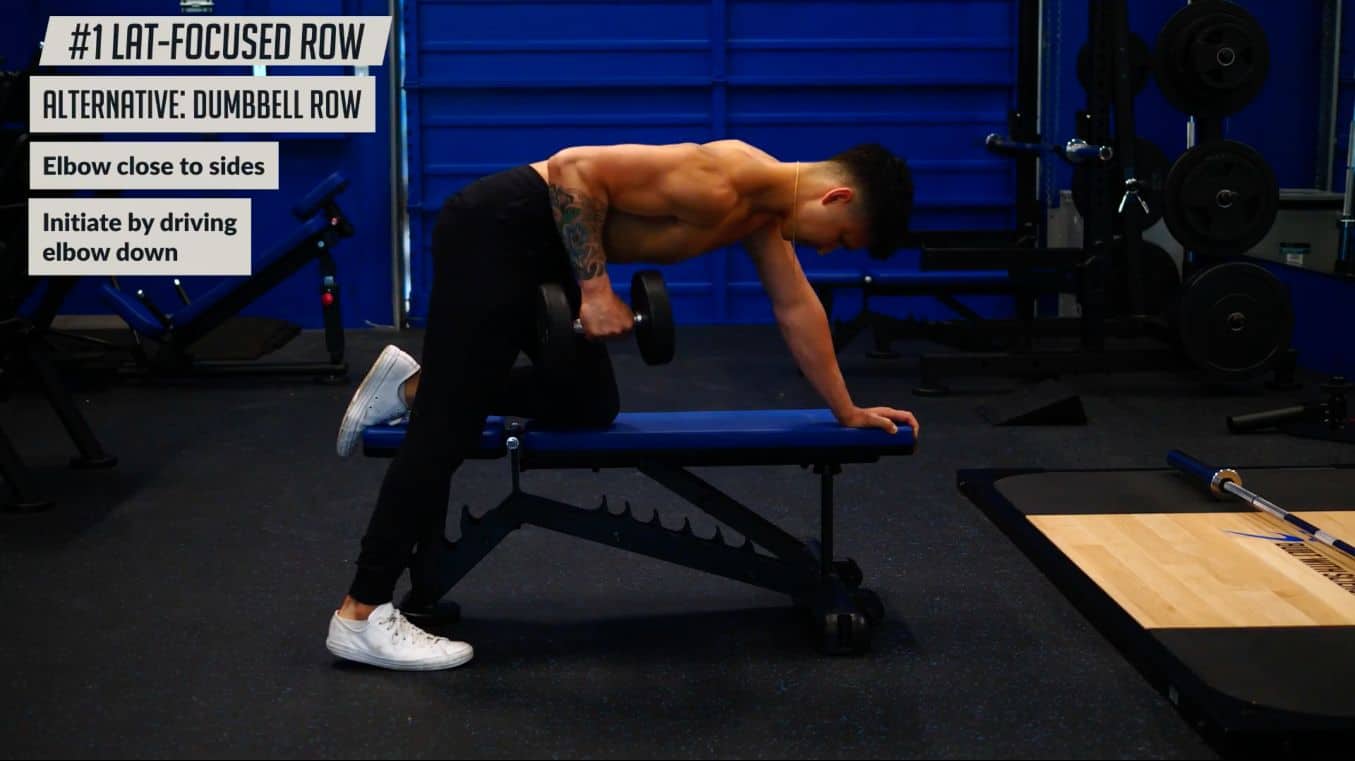
Or, you could even just replace the cable with a band.
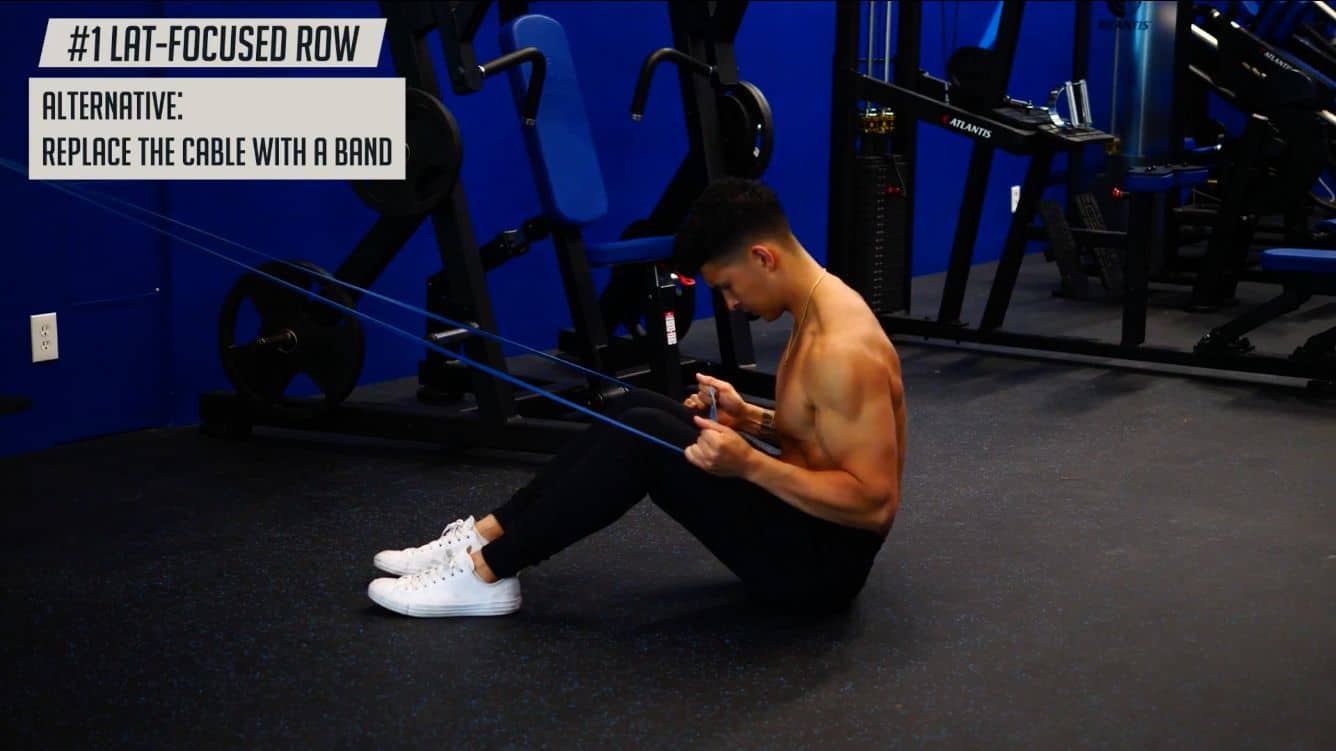
Do note, however, that with these modifications in place, you will have to drop the weight considerably. This is a good thing. And is expected. Because it means that your lats, which are likely weak, are finally being forced to work.
Exercise 2: Single-Arm Pull-Down
Next, we have the single-arm pull-down. This exercise will help bias the lower lats a little more by incorporating a more vertical pulling angle. Here, we’ll want to use a half kneeling stance. Grab a handle with a neutral grip. Make sure that:
- Your arm is positioned at roughly a 45-degree angle in front of your body AND
- The cable is positioned such that it's in line with your forearm
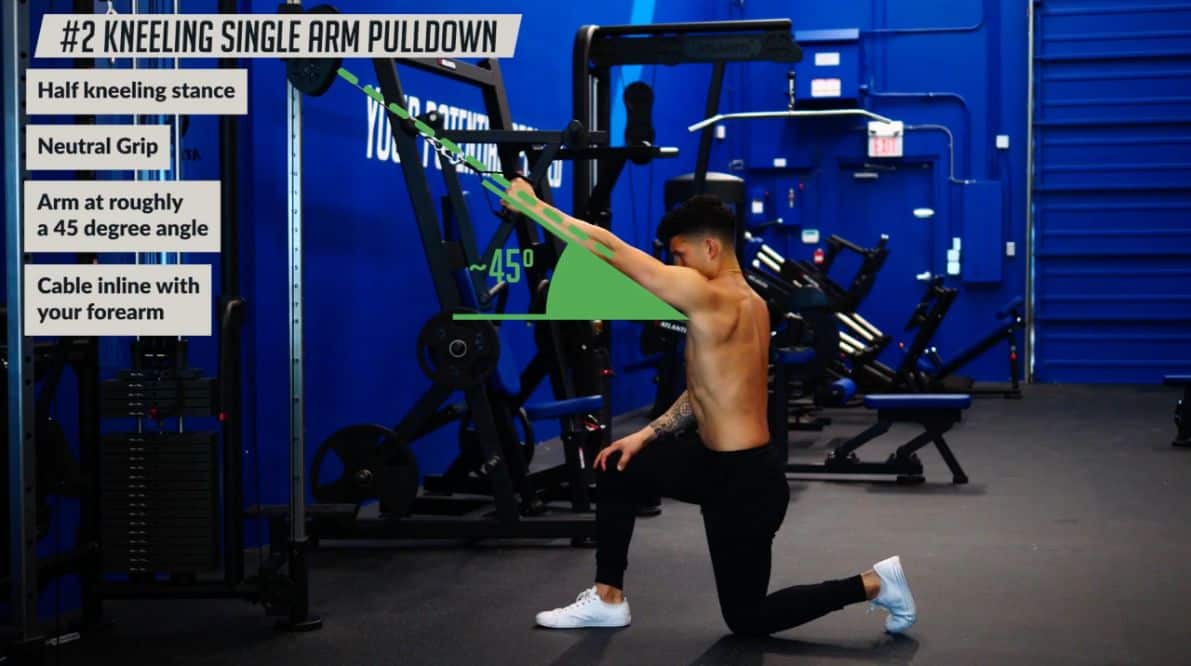
Brace your abs, keep a neutral spine, and then drive the elbow down to your side. As you pull, similar to the lat-focused row, you’ll want to keep your elbow as close as possible to your torso. You don't want them flared out. Think about driving the elbow down and then in towards your spine at the bottom position.
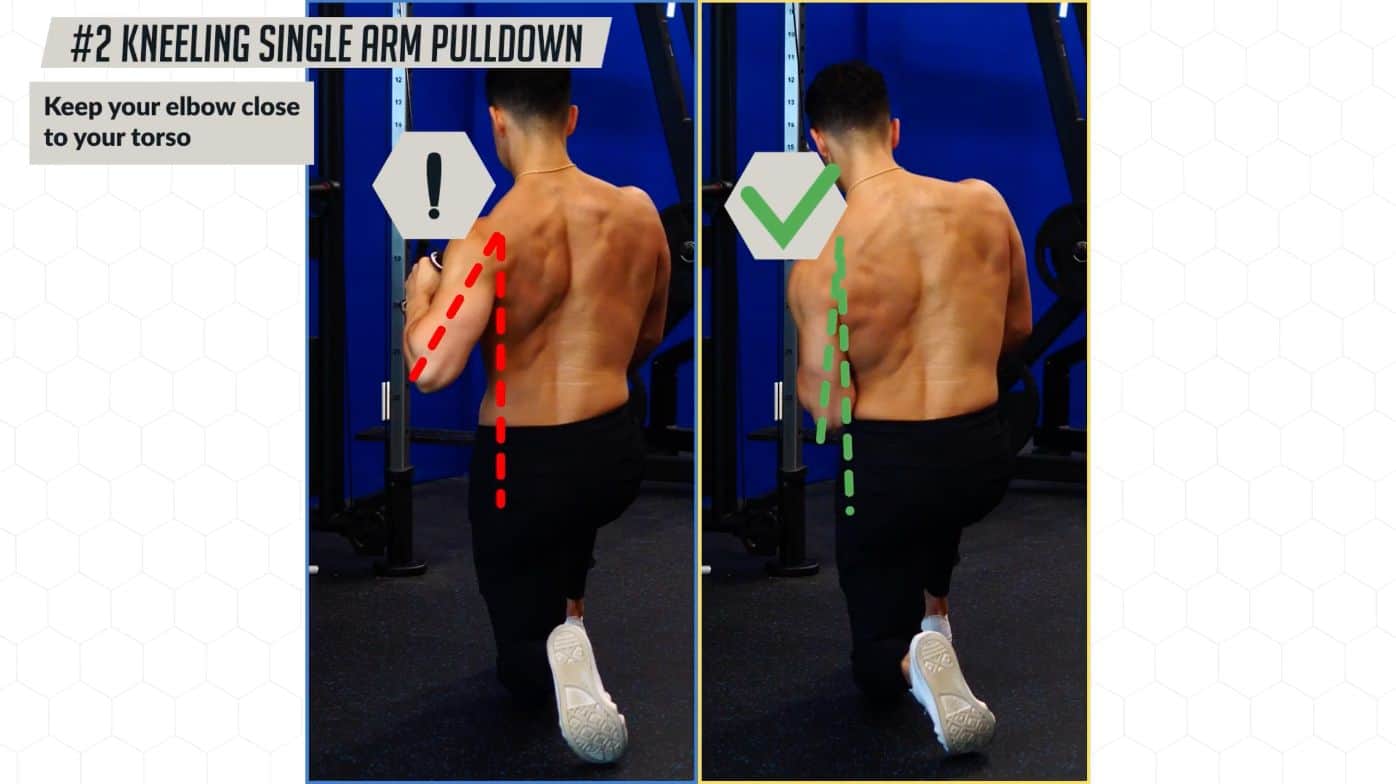
In the end position, you can even slightly bend your torso sideways towards the pulling arm to get an even greater contraction.
And again, it can be helpful to visualize a rope pulling your upper arm down, back, and in towards your spine. You can see how with this exercise the angle of pull lines up very well with the lats overall. Especially with the lower lats that wrap around the pelvis. Many of you will likely feel a strong contraction in this area that you’ve never quite experienced before.
Don’t have access to cables? Then an easy alternative is to use a band with the same setup and execution.
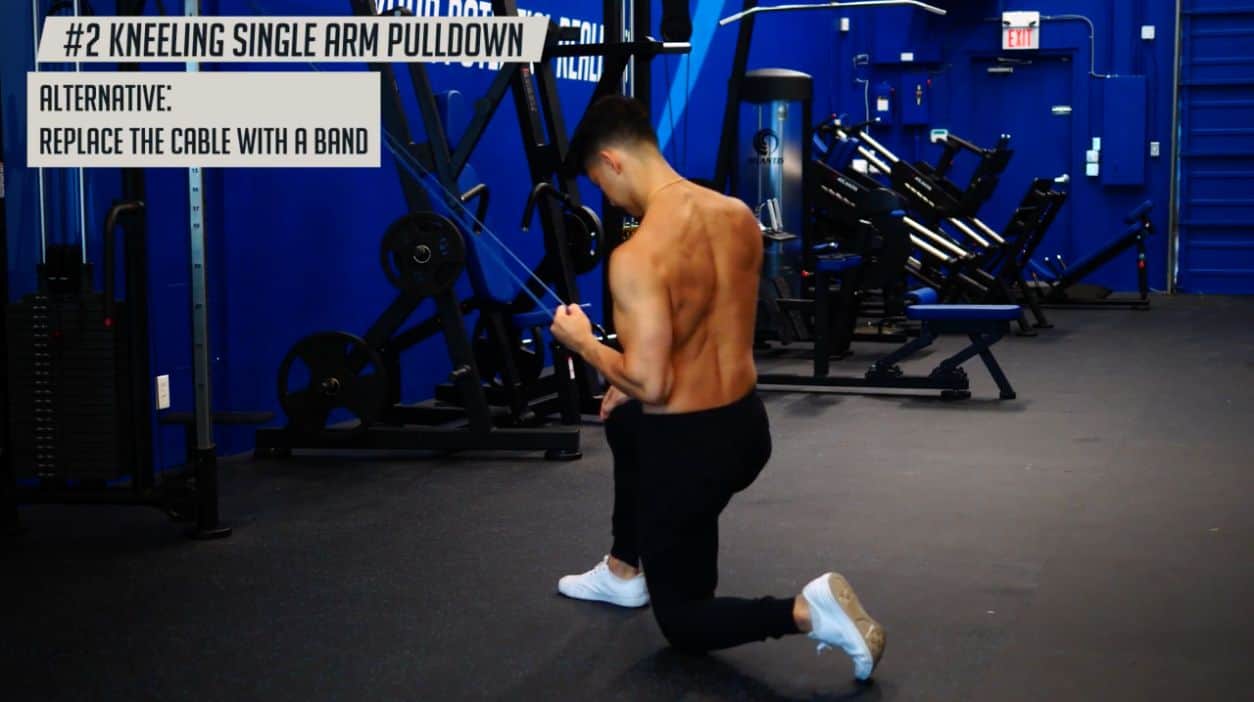
How To Program These Lats Exercises Into Your Routine For Big Lats
As for programming these into your workout routine for a bigger back, if your lats are currently lagging, then feel free to swap some of your horizontal and vertical pulling with these routines. As mentioned earlier, traditional back movements are great for overall back development. But they do tend to bias the upper back more than the lats. Which is where most people need to focus on if they’d like to add more width to their back. So, try out these exercises or their variations. And many of you will, for the first time, feel what it’s like to actually train your lats.
All in all, hopefully, you were able to see that in order to maximize your gains in any muscle, you need to pay close attention to the exercises you’re using and even closer attention to how you go about performing them. That’s what makes all the difference.
For a step-by-step program that shows you exactly how to train week after week with in depth tutorials in order to maximize your gains, then simply head on over to builtwithscience.com and take our analysis quiz to discover the best approach for you and your body:
Click the button below to take my analysis quiz to discover the best program for you:
↓


